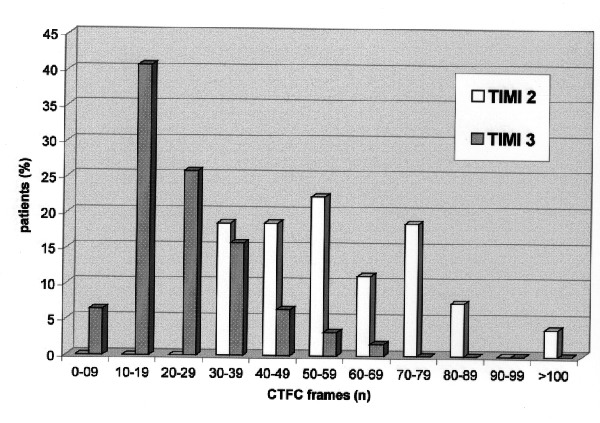

Improvement of WMSI in the TIMI 3 fast group was significantly greater than that of the TIMI 3 slow group (1.33 ± 0.52 vs. There were no significant differences in the baseline characteristics and WMSI before reperfusion between the two groups. The patients were divided into two groups according to mean CTFC for corresponding coronary artery of the control group: TIMI 3 slow group (45 patients, 40 > CTFC ≥ 23) and TIMI 3 fast group (59 patients, CTFC < 23). Wall motion score index (WMSI) and the presence of pericardial effusion were assessed by two-dimensional echocardiography before and one month after PTCA. We measured CTFC immediately after successful (TIMI 3) primary PTCA in 104 consecutive patients with their first AMI. The purpose of this study was to evaluate whether higher coronary blood flow, estimated by the corrected Thrombolysis In Myocardial Infarction (TIMI) frame count (CTFC), is related to better functional and clinical outcome after successful percutaneous transluminal coronary angioplasty (PTCA) in patients with acute myocardial infarction (AMI).Įxperimental studies have found that functional recovery of the infarcted myocardium was associated with increased blood flow (reactive hyperemia) to the infarcted bed shortly after reperfusion.


 0 kommentar(er)
0 kommentar(er)
